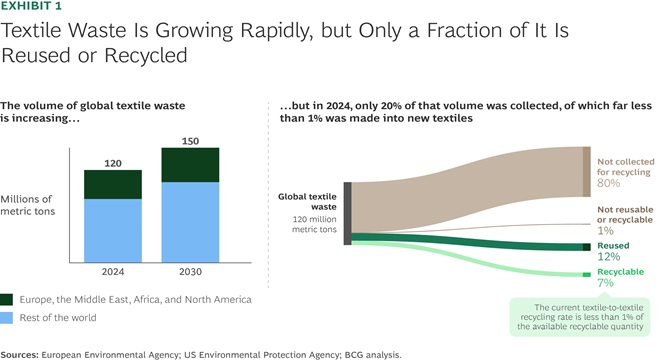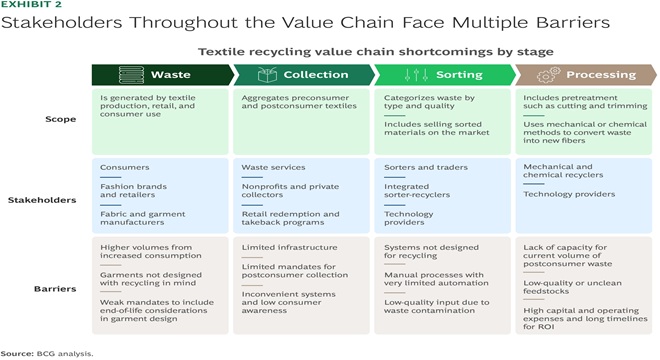
Turning Waste into Wealth How Circular Textile Strategies Could Unlock US$50 Billion and 180,000 Jobs
Global textile waste soared
to 120 million metric tonnes in 2024, with 80 % destined for landfills or
incineration. Merely 12 % was reused, 7 % deemed recyclable, and under 1 % was
converted into new fibre. If unchecked, waste could cross 150 million metric
tonnes annually by 2030. This loss translates to a staggering US$150 billion in
unrealized raw-material value each year.
Roadmap to Recovery: Jobs and Investments
BCG projects that raising
recycling rates above 30 % could unlock more than US$50 billion in recovered
fibre value and generate 180,000 new jobs globally. Achieving this requires
aggressive action across five pillars:
·
Stimulating demand for recycled-fibre
textiles
·
Boosting collection systems
·
Deploying advanced sorting technologies
·
Investing in scalable recycling solutions
·
Driving continuous innovation
Overcoming Technical and Systemic Barriers
Current recycling methods
face technical overload. Manual sorting remains inefficient. Mixed and blended
fibres complicate mechanical recycling, which today addresses only 15-18 % of
textile waste and yields shorter, lower-quality fibres. Chemical recycling,
while capable of handling complex blends, is costly and resource-intensive,
contributing 3-10 % of global greenhouse gas emissions. Breakthroughs such as
AI-enabled sorting using spectral imaging and deep learning offer a path
forward, improving accuracy and scalability in fibre classification. Digital
transformation across the value chain especially in collection, tracking, and
sorting remains critical to bridging the circularity gap in textiles.

BCG projects that raising recycling rates above 30 % could unlock more than US$50 billion in recovered fibre value and generate 180,000 new jobs globally.
If you wish to Subscribe to Textile Excellence Print Edition, kindly fill in the below form and we shall get back to you with details.








